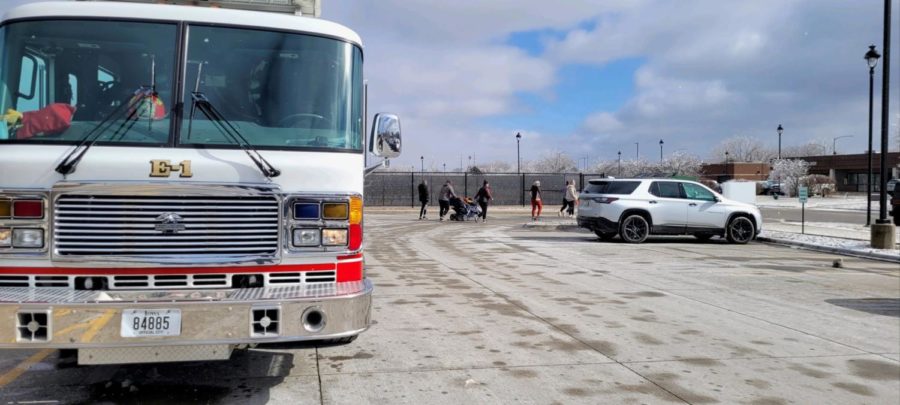No reported exposures in daycare carbon monoxide leak
Photo courtesy of the city of Ames
The Ames Fire Department responding to ChildServe on Thursday after carbon monoxide alarms went off.
February 23, 2023
Carbon monoxide reaching up to 87 parts per million leaked at a daycare in Ames Thursday, displacing a group of children and employees for roughly 45 minutes.
There were 75 children, including infants through 5 years of age, evacuated by the staff. No one was injured or reported any exposure, according to a press release from the city of Ames regarding the incident. The high levels were a result of poor ventilation from gas-powered equipment due to construction work in the same building.
The Ames Fire Department reported to ChildServe daycare after receiving a call at 1:07 p.m. that multiple carbon monoxide alarms were triggered. According to a press release from the city many carbon monoxide alarms are programmed to sound at 35 parts per million.
First responders arrived at the daycare at 1:12 p.m. to witness both students and teachers calmy exiting the building. Dispatch entered the building to quickly cover the ventilation system before more of the gas could leak out. Nick Luccheshi, the Ames Fire Department commander, was one of the few who arrived to tackle the problem.
“Many of the teachers were worried about the students getting sick,” Luccheshi said. “We had to make sure no one had gotten hurt. One of the biggest things is seeing if someone is feeling lethargic or tired all of a sudden.”
One of the signs of Carbon monoxide poisoning is feeling tired or dizzy. This usually happens within two hours. However, the smaller an individual is, the faster the effects will appear.
“We’re happy to say that no one was really sick or feeling any symptoms,” Luccheshi said. “We asked some of the staff who was exposed and how long it was before anyone noticed the smell of carbon monoxide. It’s a good sign to hear no one feels any symptoms.”
The Ames Fire Department urges students to keep an eye on their gas usage during the winter months as buildup due to gas-powered devices such as generators and grills.
“This is a good reminder of how well carbon monoxide detectors can provide an early warning of the presence of deadly carbon monoxide gas,” stated Deputy Fire Chief Tom Hackett in the press release. “Remember not to use generators, grills, gasoline or charcoal-burning devices inside your home or garage.”
To learn more about carbon monoxide safety, visit the online Carbon Monoxide prevention guide.







